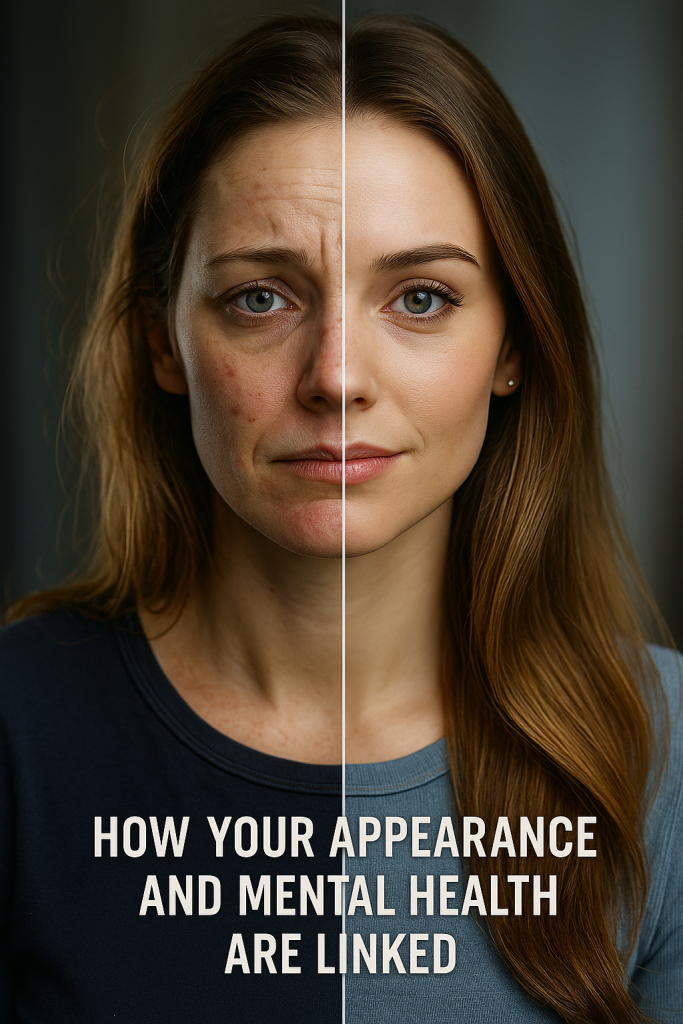Are you worried about the potential for high myopia, or short-sightedness, to result in blindness? In this article, we’ll explore the risks and complications associated with high myopia and its impact on your vision. High myopia, defined as a prescription of -5.00 diopters or worse, can greatly affect your eyesight and increase the risk of sight-threatening diseases. From myopic maculopathy to retinal detachment, cataracts, glaucoma, and choroidal neovascularization, we’ll delve into the potential complications and their implications for your visual health. It’s crucial to understand the factors contributing to myopia progression and the available methods to slow it down. By taking proactive steps, like regular eye check-ups and preventive strategies, you can reduce the risk of vision loss associated with high myopia. Join us as we explore the impact of high myopia on your eyesight and how you can protect your vision.
Definition of High Myopia
High myopia is a severe form of nearsightedness characterized by a prescription of -5.00 diopters or worse. It is important to understand the progression of high myopia, as it can lead to serious complications and even blindness if left untreated. Genetic factors play a significant role in the development of high myopia, with individuals who have a family history of the condition being at a higher risk. Vision correction options, such as glasses, contact lenses, or laser surgery, can help improve visual acuity in individuals with high myopia. However, prevention is key in managing this condition. Engaging in outdoor activities has been shown to reduce the risk of myopia progression, as exposure to natural light and time spent outdoors can help maintain the normal growth of the eyeball and prevent the elongation that leads to high myopia. Understanding the importance of myopia prevention and incorporating outdoor activities into daily routines can significantly reduce the risk of vision loss associated with high myopia.
Understanding the Risks of High Myopia
Understanding the risks associated with high myopia is essential for maintaining good eye health. High myopia, characterized by a prescription of -5.00 diopters or worse, can have significant long-term effects on your vision. Here are some important factors to consider:
- Impact on daily life: High myopia can significantly impact your daily life. It can make it difficult to see objects in the distance clearly, leading to challenges in activities such as driving, watching TV, or recognizing faces from a distance.
- Genetic factors: High myopia has a strong genetic component. If you have a family history of high myopia, you may be at a higher risk of developing it yourself. Understanding your genetic predisposition can help you take preventive measures.
- Long-term effects: High myopia increases the risk of sight-threatening conditions such as retinal detachment, glaucoma, and cataracts. These conditions can lead to vision loss if left untreated.
- Early detection: Early detection of high myopia is crucial for managing its progression and preventing complications. Regular eye exams, especially in childhood, can help identify high myopia at an early stage and allow for appropriate intervention.
Sight-Threatening Diseases Associated With High Myopia
Sight-threatening diseases are a serious concern for individuals with high myopia. High myopia, characterized by a prescription of -5.00 diopters or worse, can lead to complications that can result in vision loss if left untreated. Some of the sight-threatening diseases associated with high myopia include myopic maculopathy, retinal detachment, cataracts, glaucoma, and choroidal neovascularization (CNV).
Myopic maculopathy is a condition where the macula, the central part of the retina responsible for sharp central vision, is affected by degenerative changes. It can lead to decreased central vision and visual impairment. Retinal detachment is more common in individuals with high myopia due to the elongation of the eyeball, which increases the risk of the retina detaching from the back of the eye. Cataracts, a clouding of the lens inside the eye, can occur in individuals with high myopia due to the increased axial length. Glaucoma, a condition that damages the optic nerve, is more likely to develop in patients with high myopia, particularly primary open-angle glaucoma. Choroidal neovascularization (CNV) is the growth of abnormal blood vessels in the choroid, the layer of blood vessels behind the retina. CNV can disrupt the macula and lead to vision loss and potentially blindness.
While surgical options may be available to address these complications, the outcomes can vary. It is important for individuals with high myopia to take steps to control their myopia progression, such as regular eye exams, myopia control measures, and engaging in outdoor activities. By addressing genetic factors and implementing myopia control strategies, individuals with high myopia can reduce the risk of developing sight-threatening diseases and preserve their vision.
Methods to Slow Down Myopia Progression
To slow down the progression of myopia, you can implement various methods and strategies. Here are four effective approaches:
- Outdoor activities: Spending at least 90 minutes in outdoor sunlight daily has been shown to reduce the risk of myopia progression in children. Encourage outdoor play and exercise to promote healthy vision.
- Screen time limitations: Limiting screen time on digital devices helps reduce eye strain and potential myopia progression. Encourage breaks every 20 minutes using the 20-20-20 rule, where you look at something 20 feet away for 20 seconds.
- Pediatric eye exams: Early detection through regular pediatric eye exams is crucial for identifying myopia and monitoring its progression. Start routine eye exams at 6 months old to ensure timely intervention.
- Low concentration atropine: Low concentration atropine eye drops can be prescribed by an eye care professional to relax the eyes’ focusing mechanisms and slow down myopia progression.
Implementing these strategies can help slow down the progression of myopia and reduce the risk of sight-threatening complications associated with high myopia. Remember, undercorrection of myopia can actually enhance its progression, so it’s important to follow the guidance of your eye care professional.
Strategies to Reduce Myopia Progression
To reduce myopia progression, you can implement various strategies and techniques. Limiting screen time on digital devices and encouraging the 20-20-20 rule, which involves taking breaks every 20 minutes to look at an object 20 feet away for 20 seconds, can help alleviate eye strain and reduce myopia progression. Early detection through pediatric eye exams is crucial in identifying and monitoring myopia in children. Starting routine eye exams at 6 months old can help identify any vision issues early on and allow for prompt intervention. Additionally, spending at least 90 minutes in outdoor sunlight daily has been shown to have a protective effect against myopia development.
To further understand these strategies, refer to the table below:
| Strategies to Reduce Myopia Progression |
|---|
| Outdoor activities |
| Myopia control |
| Pediatric eye exams |
| Digital devices |
| Low concentration atropine |
Implementing these strategies can play a significant role in reducing myopia progression and preserving eye health. By incorporating outdoor activities, controlling myopia through various methods, scheduling regular pediatric eye exams, managing screen time, and considering low concentration atropine, you can take proactive steps to minimize the progression of myopia and maintain good vision.
Complications of High Myopia
High myopia can lead to a range of complications that can result in vision loss if left untreated. It is important to understand the long term effects of high myopia and the impact it can have on daily life. In addition to the physical complications, high myopia can also have psychological effects on individuals. Here are some key points to consider:
- Long term effects: High myopia increases the risk of developing sight-threatening conditions such as myopic maculopathy, retinal detachment, cataracts, glaucoma, and choroidal neovascularization (CNV). These conditions can lead to irreversible vision loss if not managed properly.
- Impact on daily life: High myopia can significantly impact a person’s ability to perform daily tasks such as reading, driving, and recognizing faces. It may also limit participation in certain activities or sports.
- Psychological effects: Living with high myopia can cause emotional distress, anxiety, and reduced quality of life. It can affect self-esteem and confidence, especially if the individual relies heavily on their vision for work or hobbies.
- Management options: Early intervention and proper management of high myopia are crucial in preventing complications. Treatment options may include prescription glasses or contact lenses, orthokeratology, atropine eye drops, or surgical procedures depending on the severity of the condition.
It is important to prioritize regular eye examinations and seek early intervention to minimize the risk of vision loss associated with high myopia.
Importance of Axial Length in Assessing Myopia
Assessing myopia involves considering the importance of axial length as a key measurement. Axial length refers to the measurement from the front to the back of the eye and is used by eye doctors to evaluate myopia. Nearsightedness occurs when the axial length is too long, causing the focal point to fall short of the retina. The average axial length varies with age, ranging from 22.36mm at 6 years to 23.67mm in adulthood. An optometrist may become concerned if a patient’s axial length exceeds 26mm as an adult.
In assessing myopia, it is important to consider both genetic and environmental factors. Low to moderate myopia can be caused by a combination of these factors. Various treatment options are available to slow down the progression of myopia, including orthokeratology and atropine. Orthokeratology involves wearing special lenses overnight to reshape the cornea, while atropine drops relax the eyes’ focusing mechanisms.
It is crucial to recognize the irreversible nature of myopia progression. Without intervention, myopia can lead to high myopia, which significantly impacts vision and increases the risk of sight-threatening conditions such as retinal detachment, glaucoma, and cataracts. By understanding the importance of axial length and considering factors such as genetics and the environment, eye care professionals can effectively assess and manage myopia to help prevent vision loss.
| Aspect | Importance |
|---|---|
| Axial Length | Key measurement |
| Genetic Factors | Influence myopia development |
| Environmental Factors | Contribute to myopia development |
| Low to Moderate Myopia | Caused by genetic and environmental factors |
Surgical Interventions for High Myopia Complications
If you are experiencing complications from high myopia, there are surgical interventions available to help manage these issues. Surgical treatments can offer potential solutions to alleviate the complications associated with high myopia. Here are four options for surgical interventions:
- Refractive surgery: Procedures such as LASIK (laser-assisted in situ keratomileusis) and PRK (photorefractive keratectomy) can be performed to reshape the cornea and correct vision. These surgeries aim to reduce or eliminate the need for glasses or contact lenses.
- Intraocular lens implantation: This surgical procedure involves the placement of an artificial lens inside the eye to correct high myopia. It can provide clear vision and reduce dependence on glasses or contact lenses.
- Vitrectomy: In cases where high myopia has led to complications such as retinal detachment or macular holes, vitrectomy may be performed. This procedure involves the removal of the vitreous gel from the eye and the repair of any retinal abnormalities.
- Retinal laser treatments: Laser therapy can be used to treat retinal complications associated with high myopia, such as retinal tears or breaks. The laser is used to create scar tissue, which helps to seal the retinal abnormalities and prevent further damage.
It is important to note that these surgical interventions may have varying long-term outcomes and patient experiences. Alternative therapies, such as visual aids and alternative treatments, may also be considered in some cases. Consulting with an eye care professional is crucial to determine the most appropriate course of action based on individual circumstances and needs.




